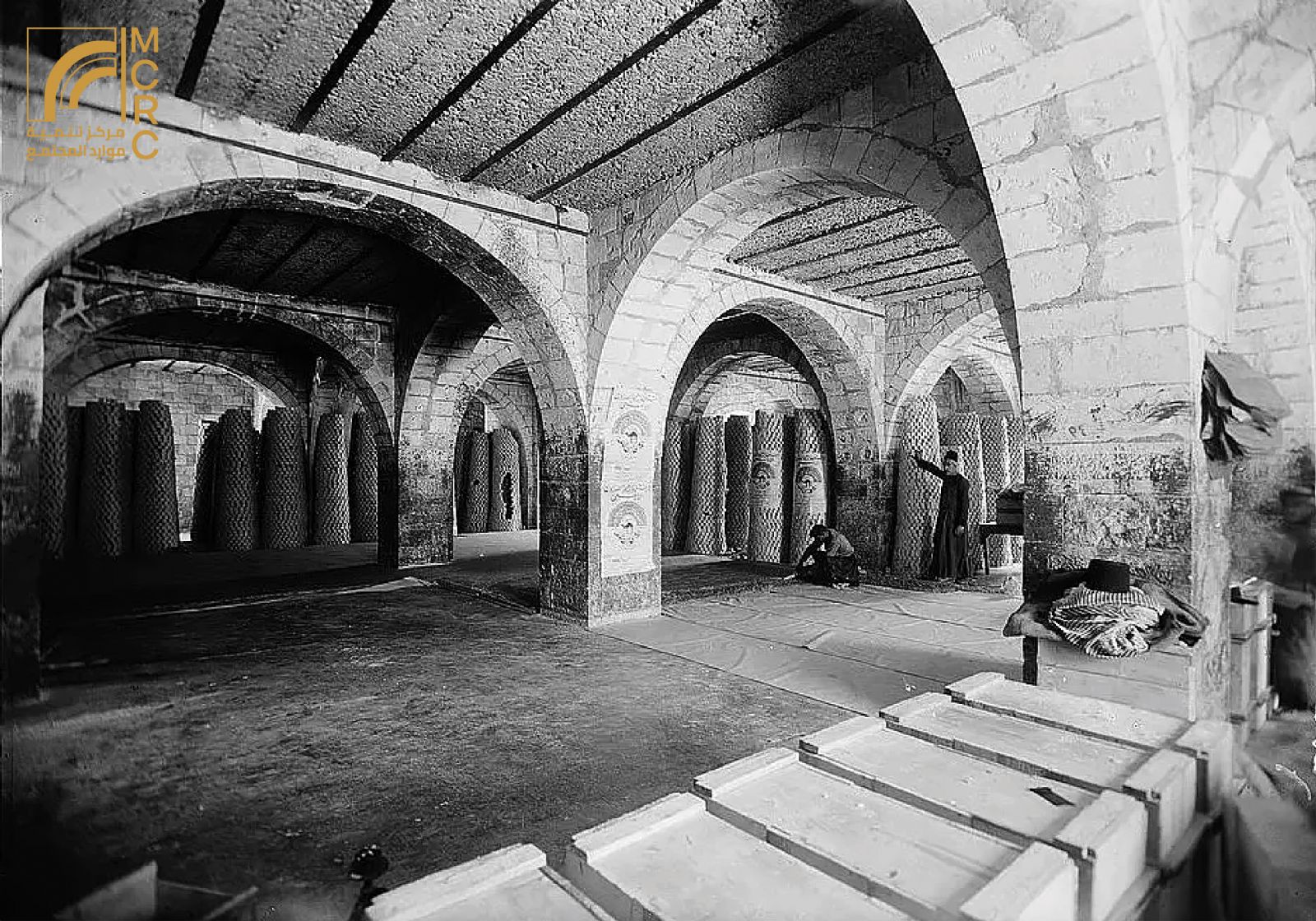
A photo from one of Nablus' soap factories showing rows of soap pieces in cone-shaped forms called "Tannaeer" (ovens), designed to facilitate the drying process. This is the final stage of soap production before the products are released. The Historians trace the history of soap production in Nablus back over a thousand years, supported by numerous writings from ancient travelers and historians, including Shams al-Din Muhammad ibn Abi Talib al-Ansari, known as "al-Maqdisi," who lived in the 13th century. He spoke about soap production in the city, that it was made there and transported to other countries. When he visited Nablus, he wrote: "This city symbolizes a palace among orchards that God has blessed with the holy olive tree.
The establishment of the first soap factories dates back to the 10th century. Trade with the Bedouins in Nablus and Hebron was essential, as they were the only ones capable of supplying the caustic soda necessary for soap production. Soap was sent to Damascus for use in the Umayyad Mosque and was also exported to many countries and islands in the Mediterranean Sea.
صورة من أحد صبانات نابلس يظهر فيها صف قطع الصابون بأشكال مخروطية تسمى «تنانير» لتسهيل عملية التجفيف وهي آخر مراحل انتاج الصابون قبل طرحها بالأسواق.
يرجع التاريخ ومؤرخوه صناعة الصابون في نابلس إلى أكثر من ألف عام مضت، مستدلين على ذلك بالكثير من الكتابات التي دونها الرحالة والمؤرخون القدماء ومنهم شمس الدين محمد بن أبي طالب الأنصاري «المقدسي» الذي عاش في القرن الثالث عشر الميلادي، وتحدث عن صناعة الصابون، وقال إنه كان يصنع في المدينة ويحمل إلى سائر البلاد، وعندما زارها كتب: «ترمز هذه المدينة إلى قصر بين البساتين أنعم الله عليها بشجرة الزيتون المباركة». كما يرجع تاريخ تأسيس أول مصانع للصابون إلى القرن العاشر الميلادي. شكلت التجارة مع البدو في نابلس والخليل عنصراً هاماً وضرورياً، حيث كان البدو هم الوحيدون القادرون على تزويدهم بالصودا الكاوية اللازمة لصناعة الصابون، وكان يتم إرسال الصابون إلى دمشق ليستخدم في المسجد الأموي، كما كان يصدر إلى العديد من البلدان وجزر البحر الأبيض المتوسط.